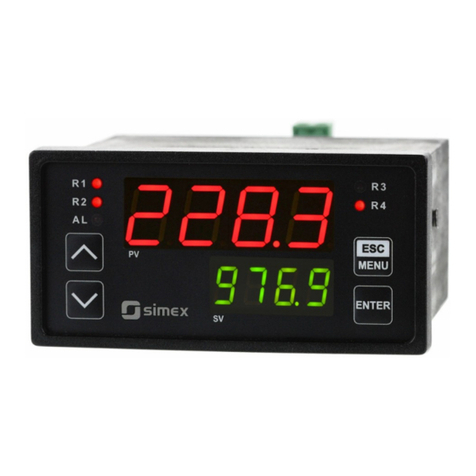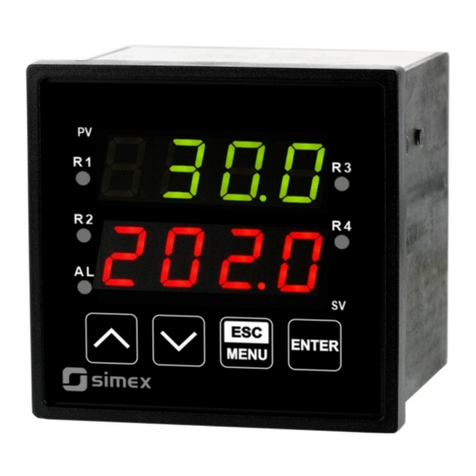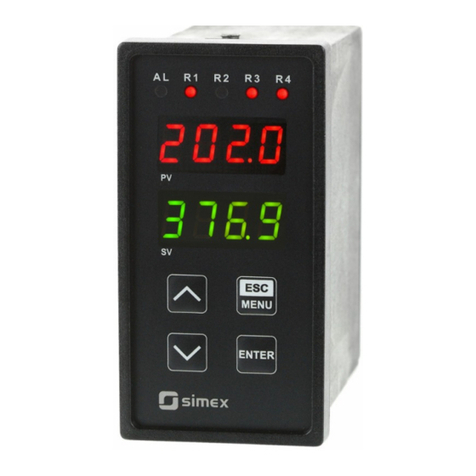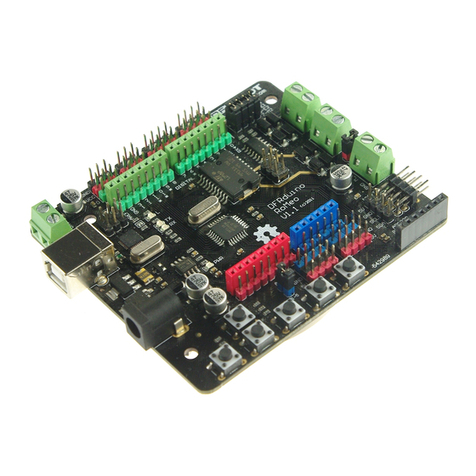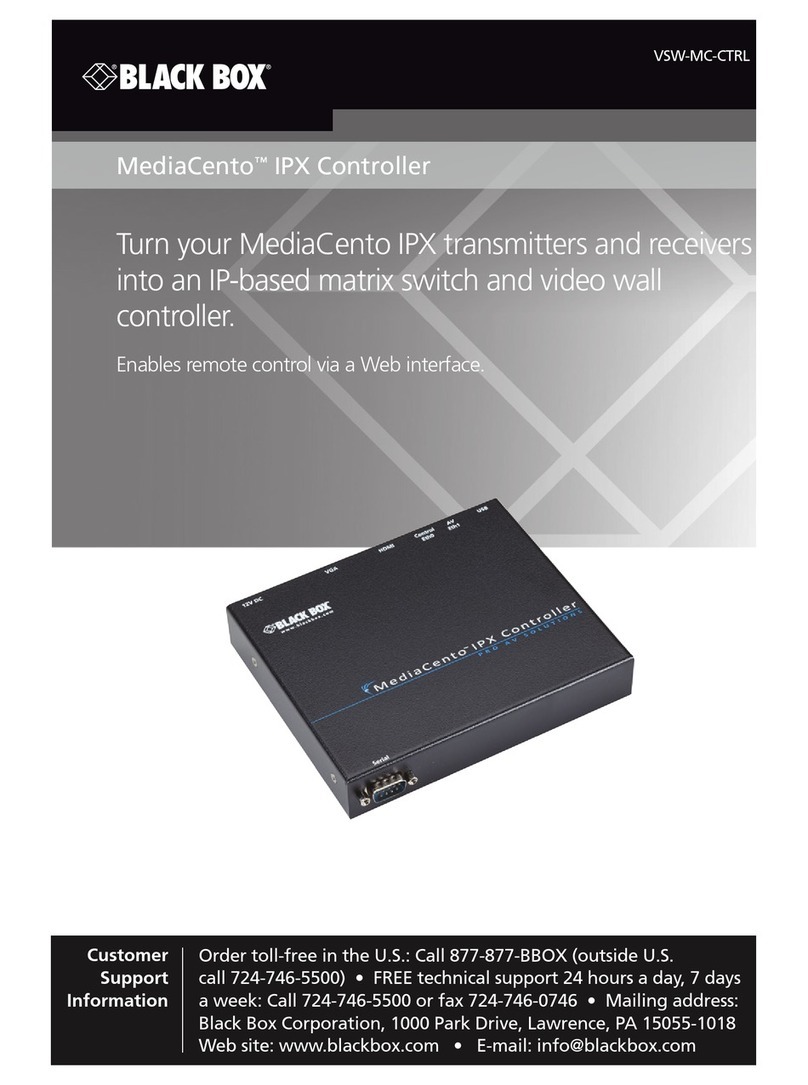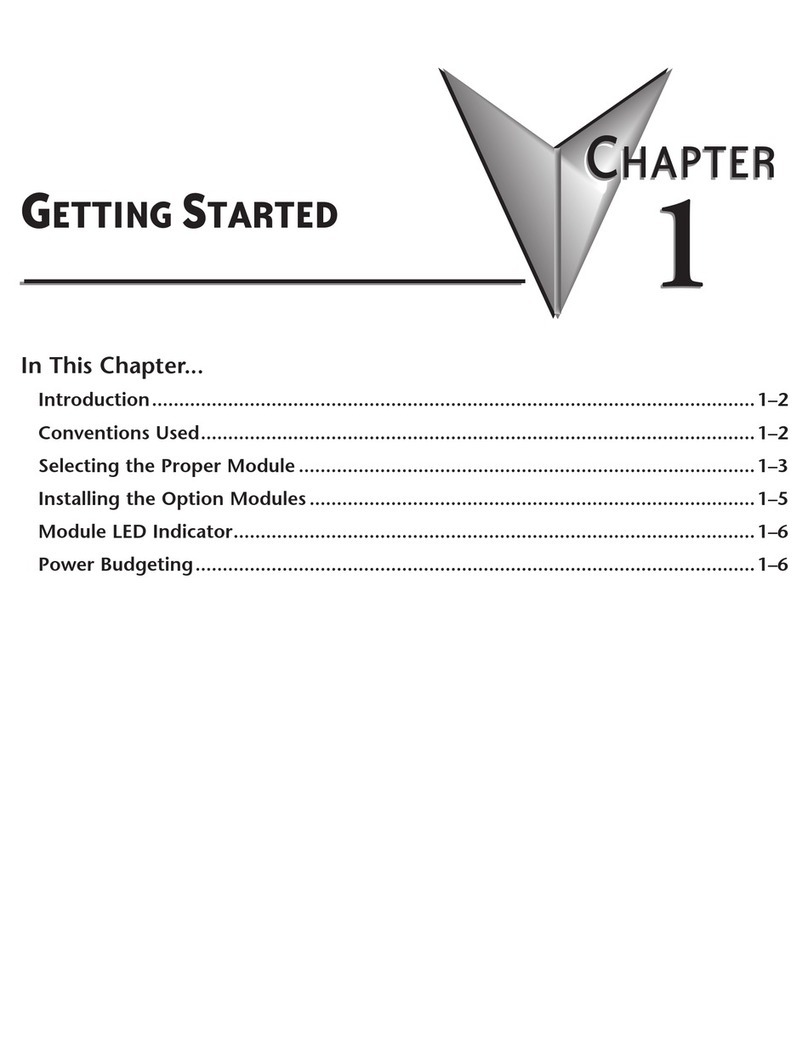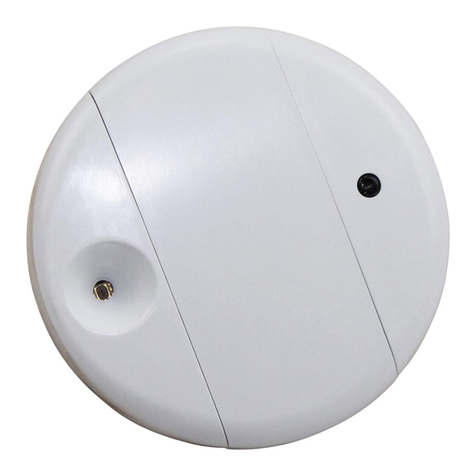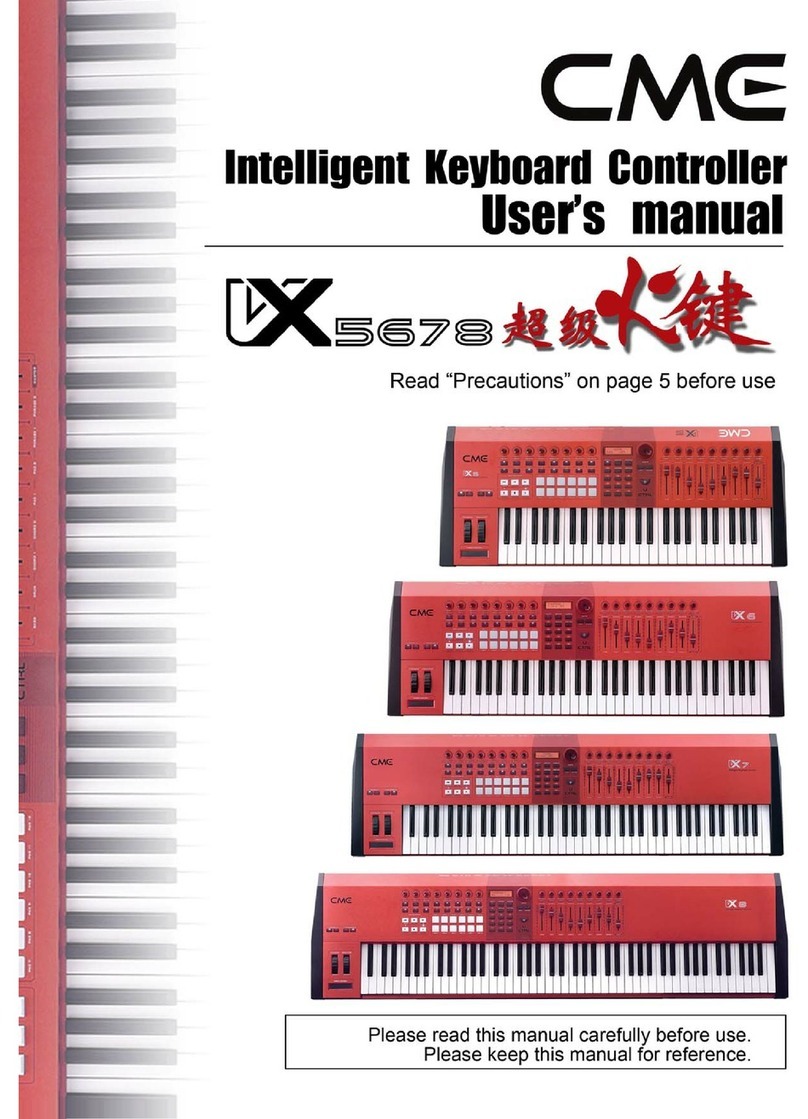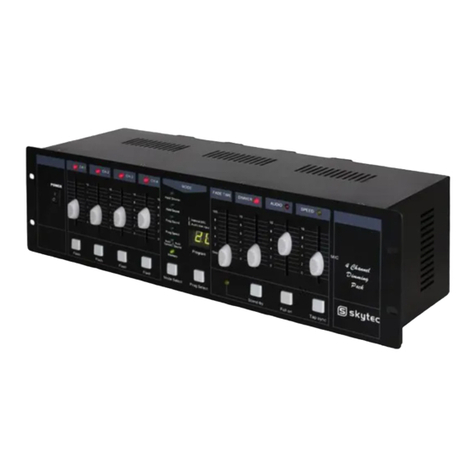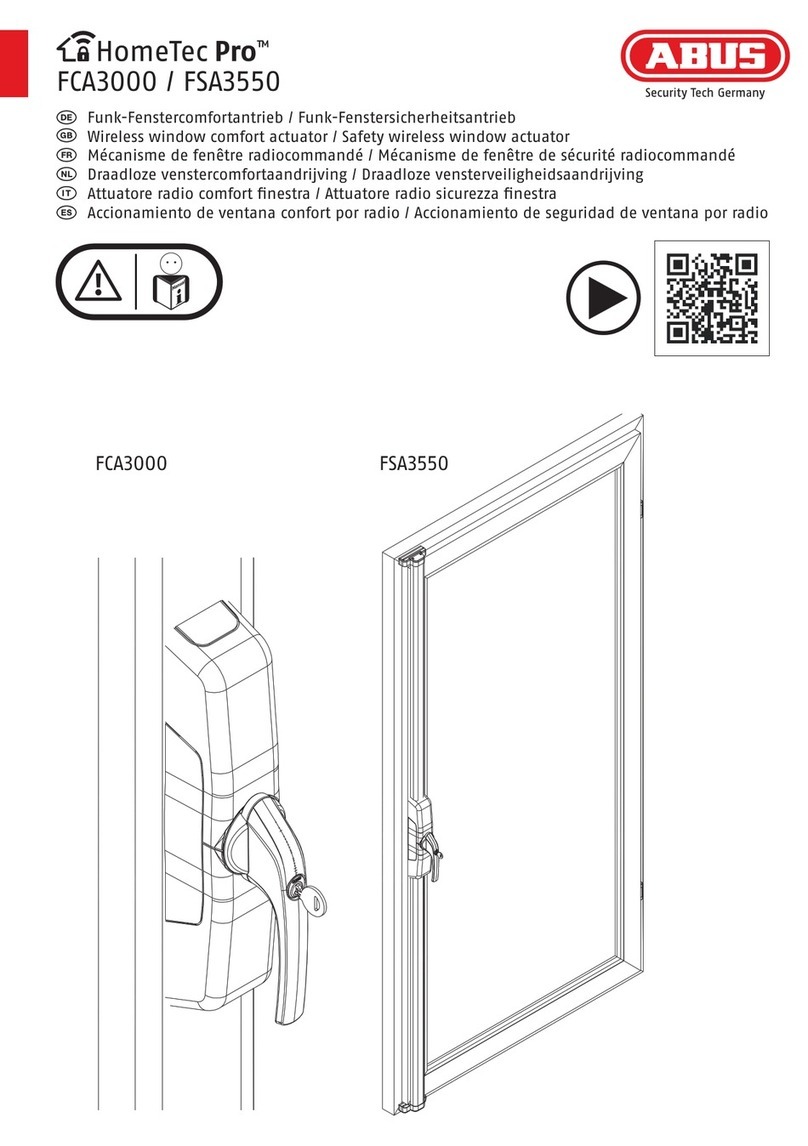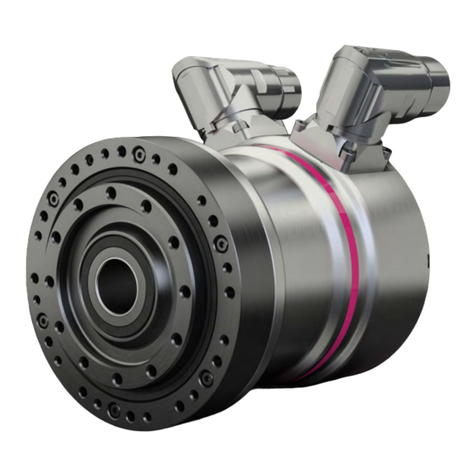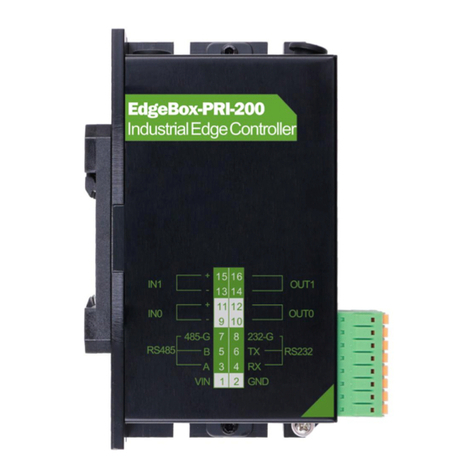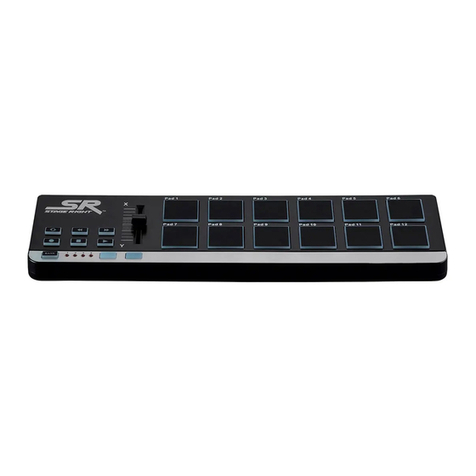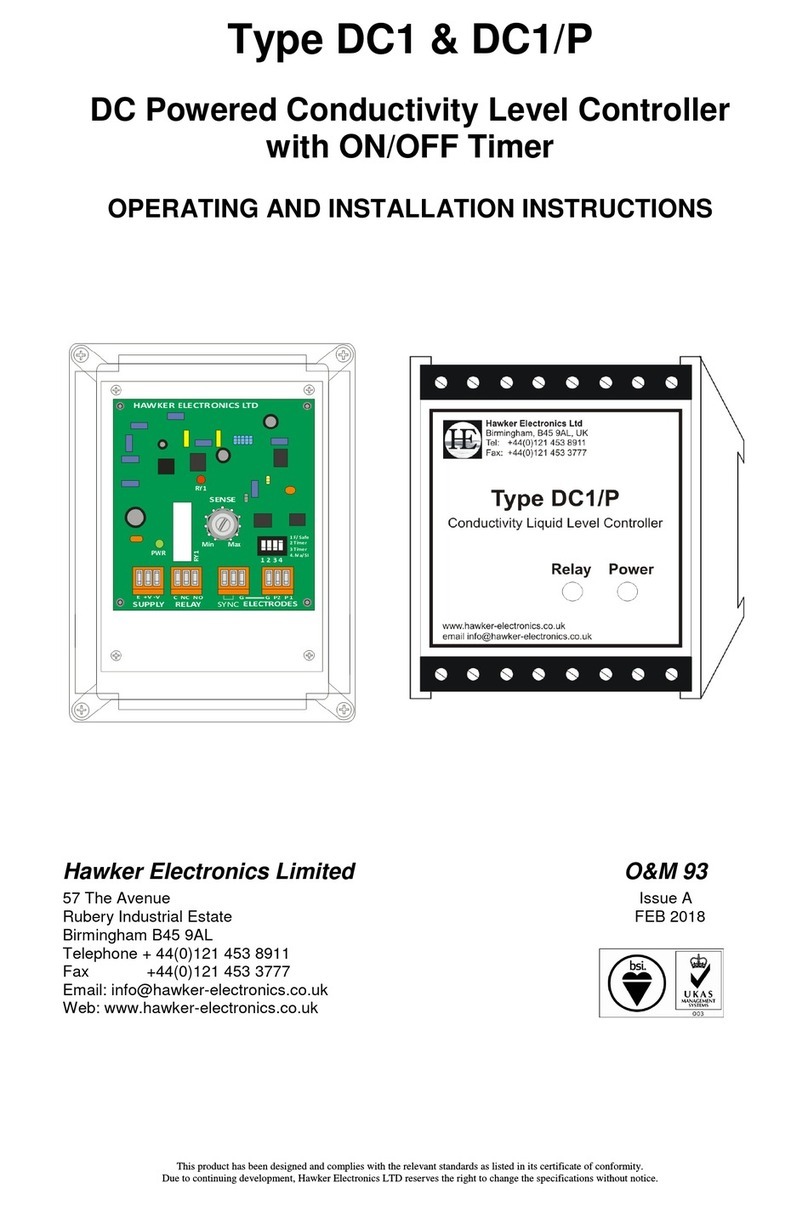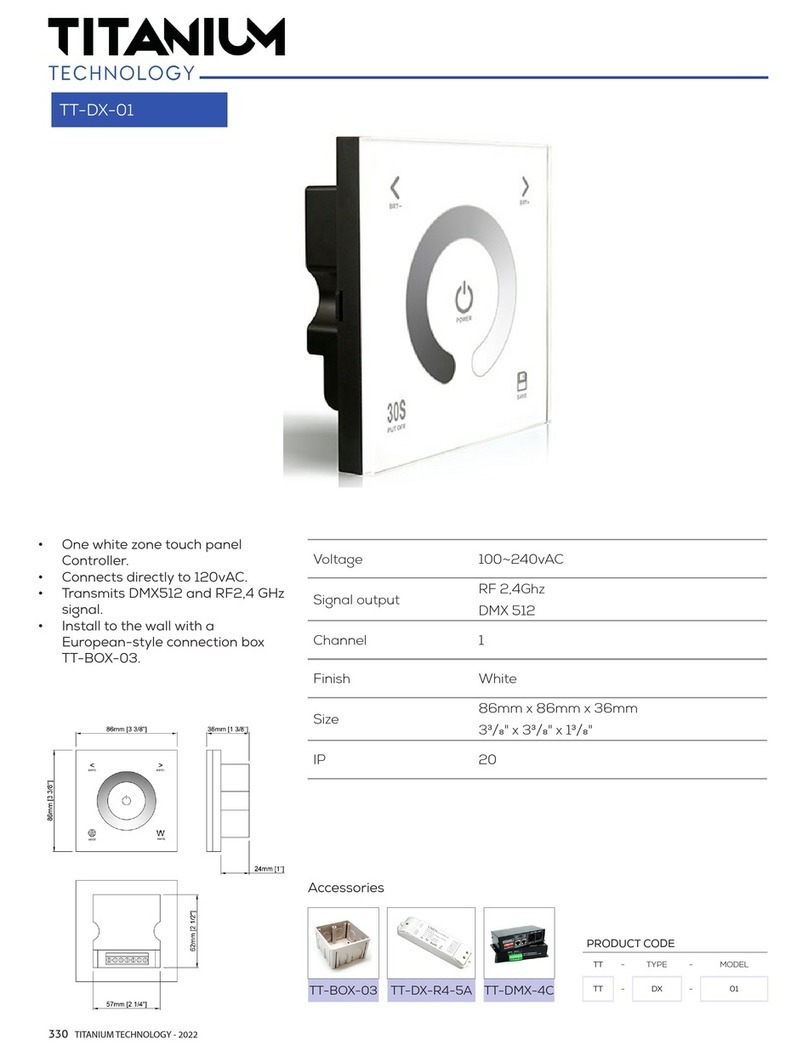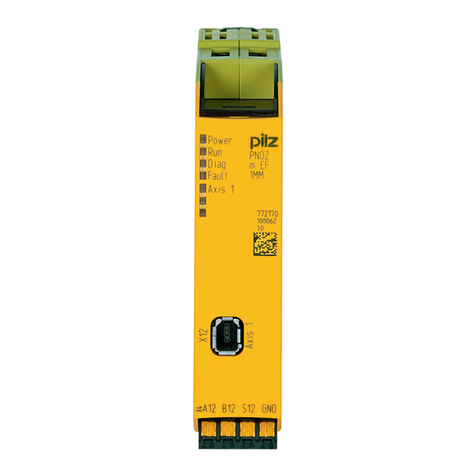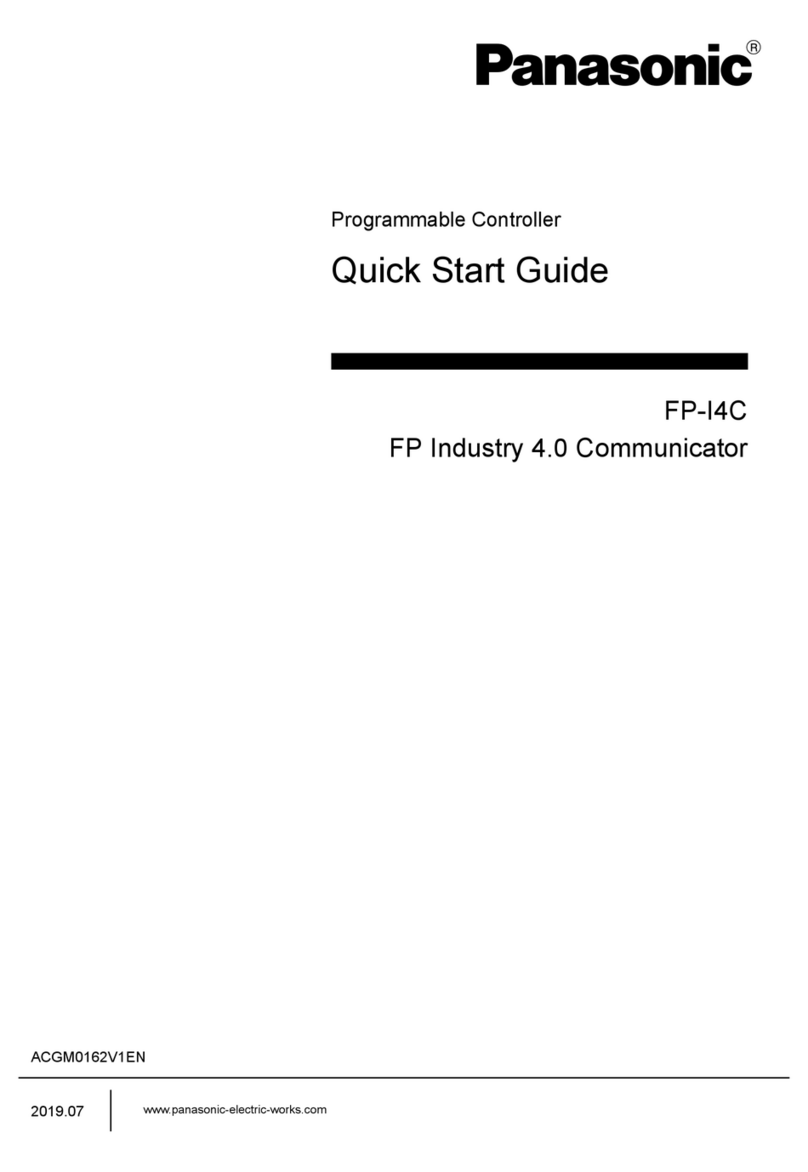Simex PUR-99 User manual

Assisting the automation
industry since 1986
User manual
CONTROLLER
PUR 99
•Firmware: v.1.07 or higher
•Input type: universal
•Two rows of dispalys
Read the user's manual carefully before starting to use the unit or software.
Producer reserves the right to implement changes without prior notice.
2020.04.08 P R-99_INSSXEN_v.1.01.002

User manual - CONTROLLER PUR-99
CONTENTS
1. BASIC REQUIREMENTS AND USER SAFETY........................................................................................3
2. GENERAL CHARACTERISTICS................................................................................................................4
3. TECHNICAL DATA......................................................................................................................................5
4. DEVICE INSTALLATION............................................................................................................................8
4.1. UNPACKING.......................................................................................................................................8
4.2. ASSEMBLY........................................................................................................................................8
4.3. CONNECTION METHOD.................................................................................................................10
4.4. MAINTENANCE................................................................................................................................20
5. FRONT PANEL DESCRIPTION................................................................................................................20
6. PRINCIPLE OF OPERATION...................................................................................................................21
6.1. MEASUREMENT MODE..................................................................................................................21
6.1.1. Detect on OF THE PEAK VALUES........................................................................................22
6.2. PID REGULATORS..........................................................................................................................23
6.3. CONTROL OF THE RELAY OUTPUTS..........................................................................................28
6.3.1. One threshold mode................................................................................................................29
6.3.2. Two thresholds mode..............................................................................................................30
6.3.3. PWM Controll ng.....................................................................................................................31
. DEVICE PROGRAMMING.........................................................................................................................33
7.1. PROGRAMMING MENU..................................................................................................................33
7.2. PARAMETERS EDITION.................................................................................................................34
7.2.1. Numer c parameters (d g t change mode)...............................................................................34
7.2.2. Numer c parameters (sl de change mode)..............................................................................34
7.2.3. Sw tch parameters (“LIST” type).............................................................................................35
7.3. MENU DESCRIPTION.....................................................................................................................35
7.3.1. “1 rEL” menu............................................................................................................................36
7.3.2. “bEEP” menu...........................................................................................................................39
7.3.3. “ nPt” menu (common parameters).........................................................................................39
7.3.4. “ nPt” menu (parameters of temperature nputs).....................................................................40
7.3.5. “ nPt” menu (parameters of current and voltage nputs).........................................................40
7.3.6. ”OutP” menu............................................................................................................................42
7.3.7. “CtrL” Menu.............................................................................................................................44
7.3.8. ”br ” parameter.........................................................................................................................48
7.3.9. ”HOLd” menu...........................................................................................................................48
7.3.10. ”d SP” menu..........................................................................................................................49
7.3.11. ”SECu” menu.........................................................................................................................49
7.3.12. ”rS” menu...............................................................................................................................50
7.3.13. ”Ed t” parameter....................................................................................................................51
7.3.14. ”dEFS” parameter..................................................................................................................51
7.3.15. ”SErv” menu..........................................................................................................................51
7.4. MENU STRUCTURE........................................................................................................................52
8. THE ALARM LED......................................................................................................................................55
9. OVER-CURRENT PROTECTION.............................................................................................................55
10. DISPLAYED VALUES CALCULATION..................................................................................................55
10.1. ADDITIONAL CALCULATIONS (USED CONVERSION CHARACTERISTIC).............................55
10.1.1. L near character st c..............................................................................................................56
10.1.2. Square character st c............................................................................................................56
10.1.3. Square root character st c.....................................................................................................57
10.1.4. User def ned character st c...................................................................................................57
10.2. EXAMPLES OF CALCULATIONS.................................................................................................58
11. SIGNALISATION OF ERRORS IN AUTO-TUNING PROCESS............................................................62
12. THE MODBUS PROTOCOL HANDLING...............................................................................................63
12.1. LIST OF REGISTERS....................................................................................................................63
12.2. TRANSMISSION ERRORS DESCRIPTION..................................................................................70
12.3. EXAMPLES OF QUERY/ANSWER FRAMES...............................................................................71
13. DEFAULT AND USER'S SETTINGS LIST............................................................................................. 3
2

User manual - CONTROLLER PUR-99
Explanation of symbols used in the manual:
- Th s symbol denotes espec ally mportant gu del nes concern ng the nstallat on and
operat on of the dev ce. Not comply ng w th the gu del nes denoted by th s symbol
may cause an acc dent, damage or equ pment destruct on.
IF THE DEVICE IS NOT USED ACCORDING TO THE MANUAL THE USER IS
RESPONSIBLE FOR POSSIBLE DAMAGES.
- Th s symbol denotes espec ally mportant character st cs of the un t.
Read any nformat on regard ng th s symbol carefully
1. BASIC REQUIREMENTS AND USER SAFETY
- The manufacturer is not responsible for any damages caused by
inappropriate installation, not maintaining the proper environmental
conditions and using the unit contrary to its assignment.
- Installation should be conducted by qualified personnel . During installation all
available safety requirements should be considered. The fitter is responsible for
executing the installation according to this manual, local safety and EMC
regulations.
- If the device is equipped with PE connector, it should be connected to PE wire.
Otherwise PE wire should be connected to GND connector.
- The unit must be properly set-up, according to the application. Incorrect
configuration can cause defective operation, which can lead to unit damage or
an accident.
- If in the case of a unit malfunction there is a risk of a serious threat to the
safety of people or property additional, independent systems and
solutions to prevent such a threat must be used.
- The unit uses dangerous voltage that can cause a lethal accident. The unit
must be switched off and disconnected from the power supply prior to
starting installation of troubleshooting (in the case of malfunction).
- Neighbouring and connected equipment must meet the appropriate standards
and regulations concerning safety and be equipped with adequate overvoltage
and interference filters.
- Do not attempt to disassemble, repair or modify the unit yourself. The unit
has no user serviceable parts. Defective units must be disconnected and
submitted for repairs at an authorized service centre.
3
i
!
!

User manual - CONTROLLER PUR-99
- In order to minimize fire or electric shock hazard, the unit must be protected
against atmospheric precipitation and excessive humidity.
- Do not use the unit in areas threatened with excessive shocks, vibrations, dust,
humidity, corrosive gasses and oils.
- Do not use the unit in areas where there is risk of explosions.
- Do not use the unit in areas with significant temperature variations, exposure to
condensation or ice.
- Do not use the unit in areas exposed to direct sunlight.
- Make sure that the ambient temperature (e.g. inside the control box) does not
exceed the recommended values. In such cases forced cooling of the unit must
be considered (e.g. by using a ventilator).
The unit is designed for operation in an industrial environment and must
not be used in a household environment or similar.
2. GENERAL CHARACTERISTICS
The UR-99 device has a universal input that can be configured to work as: a current
input (in the range 0 – 20 mA), as a voltage input (in the range 0-10V and 0-150 mV), as an
RTD input (operating with Pt 100/500/1000 sensors) and as a TC input (operating K, S, J, T, N,
R, B and E type thermocouples). The device automatically compensates the temperature of
cold junction of thermocouple sensor. RTD and TC inputs feature full linearization of
characteristics. Only one input type can be used at a time. The exact measurement ranges of
the inputs are quoted in the next chapter. The measurement is shown on a 4-digit LED display.
The device can be equipped with 1, 2 or 4 relay outputs and nulll or one OC-type output
(not available in the 4 relay output version), which can be controlled from the measuring
inputs, via Modbus protocol or a PID controller implemented in the device with two control
loops and an auto-tuning option. Optionally, the device (in version with two relays and OC-type
output) can be equipped with: an active current output, a passive isolated current output or an
active voltage output. An RS-485 communication interface and a sensor transducer power
supply output are available as standard. The device is available in two power supply versions.
Exact description of functions is provided in further section of the instruction.
The UR-99 is designed to regulate such processes as heating / cooling temperatures
with adjustable delay times for the operation of the output relays and controlling of valve levels.
4
!
!

User manual - CONTROLLER PUR-99
3. TECHNICAL DATA
ower supply voltage
(depending on version)
External fuse (required)
Power consumption
85...230...260 V AC/DC; 50÷60 Hz (separated)
or 19...24...50 V DC and 16...24...35 V AC (separated)
T - type, max. 2 A
max. 7 VA @ 85 V÷260 V AC/DC
max. 7 VA @ 16 V÷35 V AC
max. 7 W @ 19 V÷50 V DC
Current input (20 mA) 0÷20 mA, 4÷20 mA overload protected,
input current is limited to 50 mA (typically)
Current measurement accuracy ± 0.1% @ 25°C; ± one digit (for 0÷20 mA range)
Current input resistance < 65 W (typical 30 W)
Accepted prolonged input overload 20%
Voltage input (10V range) 0÷5 V, 1÷5 V, 0÷10 V, 2÷10 V
Voltage measurement accuracy ± 0.1% @ 25°C; ± one digit (for 0÷10 V range)
Input resistance > 100 kW (while maintaining correct polarization)
Accepted prolonged input overload 20%
Voltage input (150mV range) 0÷60 mV, 0÷75 mV, 0÷100 mV, 0÷150 mV
Voltage measurement accuracy ± 0.1% @ 25°C; ± one digit (for 0÷150 mV range)
Input resistance > 1,5 MW
Accepted prolonged input overload 20%
RTD input (resistive) Pt 100, Pt 500,Pt 1000
Measurement range -100°C÷600°C
Measurement accuracy ± 0,1% @ 25°C; ± one digit
Measurement wires resistance max. 20 W (every wire)
5

User manual - CONTROLLER PUR-99
Thermocouple input K, S, J, T, N, R, B, E
Thermocouple input range K: -200˚C ÷ +1370˚C
S: -50˚C ÷ +1768˚C
J: -210˚C ÷ +1200˚C
T: -200˚C ÷ + 400˚C
N: -200˚C ÷ +1300˚C
R: -50˚C ÷ +1768˚C
B: +250˚C ÷ +1820˚C
E: -200˚C ÷ +1000˚C
Measurement accuracy K, J, E: ± 0.1% @ 25°C; ± one digit
N: ± 0.2% @ 25°C; ± one digit
S, T, R, B: ± 0.5% @ 25°C; ± one digit
Accuracy of cold ends temperature
compensation
± 1˚C
Sensor power supply output 24 V +5%, -10% / max. 100 mA, stabilized
Relay output 1, 2 or 4 NO 5 A/250 V AC (resistance)
3 A/250 V AC (reactance)
OC-type output 0 or 1; 30 mA / 30V DC / 100mW
Active current output
(optional, for two relays and one
OC-type output version only)
range max. 0÷24 mA
Load resistance max. 700 W
assive isolated current output
(optional, for two relays and one
OC-type output version only)
range max. 2.8÷24 mA
Supply voltage s = 9.5÷36 V
Load resistance max. ( s – 9.5V) / 24 mA [kW]
Active voltage output
(optional, for two relays and one
OC-type output version only)
range max. 0÷11 V
Load resistance min. 2000 W
Temperature stability 50 ppm / °C
6

User manual - CONTROLLER PUR-99
Communication interface RS-485, 8N1 and 8N2, Modbus RT , not separated
Baud rate 1200÷115200 bit/s
Displays
(depending on version)
LED, main PV 20 mm height green,
auxiliary SV 13 mm height red,
single 10 mm height green
or
LED, main PV 20 mm height red,
auxiliary SV 13 mm height green
single 10 mm height red
Main PV display range -999 ÷ 9999 plus decimal point
Data memory non-volatile memory, EEPROM type
Protection level IP 65
optional version with panel cut-out sealing available
Terminals protection IP 20
Housing type
Housing material
Housing dimensions
Mounting hole
Assembly depth
Panel thickness
panel
NORYL - GFN2S E1
96 x 96 x 100 mm
90.5 x 90.5 mm
102 mm
max. 5 mm
Operating temperature
(depending on version)
0°C to +50°C
or -20°C to +50°C
Storage temperature
(depending on version)
-10°C to +70°C
or -20°C to +70°C
Humidity
Altitude
5 to 90% no condensation
up to 2000 meters above sea level
Screws tightening max. torque 0,5 Nm
Max. connection leads cross
section
2,5 mm2
Safety requirements according to: EN 61010-1
installation category: II
pollution degree: 2
voltage in relation to ground: 300 V AC
insulation resistance: >20 MW
insulation strength between power supply and
input/output terminal: 1min. @ 2300 V AC
insulation strength between relays terminal:
1 min. @ 1350 V AC
EMC according to: EN 61326-1
This equipment is not intended for use in residential environments and may
not provide adequate protection to radio reception in such environments.
7
!

User manual - CONTROLLER PUR-99
4. DEVICE INSTALLATION
The unit has been designed and manufactured in a way assuring a high level of user
safety and resistance to interference occurring in a typical industrial environment. In order to
take full advantage of these characteristics installation of the unit must be conducted correctly
and according to the local regulations.
- Read the basic safety requirements on page 3 prior to starting the installation.
- Ensure that the power supply network voltage corresponds to the nominal
voltage stated on the unit’s identification label.
- The load must correspond to the requirements listed in the technical data.
- All installation works must be conducted with a disconnected power supply.
- Protecting the power supply connections against unauthorized persons must be
taken into consideration.
4.1. UNPACKING
After removing the unit from the protective packaging, check for transportation damage.
Any transportation damage must be immediately reported to the carrier. Also, write down the
unit serial number located on the housing and report the damage to the manufacturer.
Attached with the unit please find:
- user’s manual,
- warranty,
- assembly brackets - 2 pieces.
4.2. ASSEMBLY
- The unit is designed for mounting inside housings (control panel, switchboard)
insuring appropriate protection against surges and interference. Metal housings
must be connected to ground in a way that complies with the governing
regulations.
- Disconnect the power supply prior to starting assembly.
- Check the connections are wired correctly prior to switching the unit on.
In order to install the unit, a 90.5 x 90.5 mm mounting hole (Figure 4.1) must be
prepared. The thickness of the material of which the panel is made must not exceed
5 mm. When preparing the mounting hole take the grooves for catches located on
both sides of the housing into consideration (Figure 4.1). Allowable mounting hole
dimensions are shown in Figure 4.2.Place the unit in the mounting hole inserting it
from the front side of the panel, and then fix it using the brackets (Figure 4.3). The
minimum distances between the centre points of multiple units - due to the thermal
and mechanical conditions of operation - are 115 mm (Figure 4.4).
8
!
!
!

115 mm
115 mm
User manual - CONTROLLER PUR-99
F gure 4.3. Install ng of brackets
F gure 4.4. M n mum d stances when assembly of a number of un ts
4.3. CONNECTION METHOD
Caution
- Installation should be conducted by qualified personnel. During installation all
available safety requirements should be considered. The fitter is responsible for
executing the installation according to this manual, local safety and EMC
regulations.
- The unit is not equipped with an internal fuse or power supply circuit breaker.
Because of this an external time-delay cut-out fuse with a small nominal current
value must be used (recommended bipolar, max. 2A) and a power supply circuit-
breaker located near the unit. In the case of using a monopolar fuse it must be
mounted on the phase cable (L).
10
!
8 mm
99 mm

User manual - CONTROLLER PUR-99
- The power supply network cable diameter must be selected in such a way that in
the case of a short circuit of the cable from the side of the unit the cable shall be
protected against destruction with an electrical installation fuse.
- Wiring must meet appropriate standards and local regulations and laws.
- In order to secure against accidental short circuit the connection cables must be
terminated with appropriate insulated cable tips.
- Tighten the clamping screws. The recommended tightening torque is 0.5 Nm.
Loose screws can cause fire or defective operation. Over tightening can lead to
damaging the connections inside the units and breaking the thread.
- In the case of the unit being fitted with separable clamps they should be inserted
into appropriate connectors in the unit, even if they are not used for any
connections.
- Unused terminals (marked as n.c.) must not be used for connecting any
connecting cables (e.g. as bridges), because this can cause damage to the
equipment or electric shock.
- If the unit is equipped with housing, covers and sealing to, protecting against
water intrusion, pay special attention to their correct tightening or clamping. In the
case of any doubt consider using additional preventive measures (covers, roofing,
seals, etc.). Carelessly executed assembly can increase the risk of electric shock.
- After the installation is completed do not touch the unit’s connections when it is
switched on, because it carries the risk of electrical shock.
Due to possible significant interference in industrial installations appropriate measures
assuring correct operation of the unit must be applied. To avoid the unit of improper
indications keep recommendations listed below.
–Avoid running signal cables and transmission cables together with power supply cables
and cables controlling inductive loads (e.g. contactors). Such cables should cross at
a right angle.
–Contactor coils and inductive loads should be equipped with interference protection
systems, e.g. RC-type.
–se of screened signal cables is recommended. Signal cable screens should be
connected to the earthing only at one of the ends of the screened cable.
–In the case of magnetically induced interference the use of twisted pair of signal cables is
recommended. Twisted pair (best if shielded) must be used with RS-485 serial
transmission connections.
–In the case of measurement or control signals are longer than 30m or go outside of the
building then additional safety circuits are required.
–In the case of interference from the power supply side the use of appropriate interference
filters is recommended. Bear in mind that the connection between the filter and the unit
should be as short as possible and the metal housing of the filter must be connected to
11
!

User manual - CONTROLLER PUR-99
the earth with the largest possible surface. The cables connected to the filter output must
not be run with cables with interference (e.g. circuits controlling relays or contactors).
Connections of power supply voltage and measurement signals are executed using the
screw connections on the back of the unit’s housing.
F gure 4.5. Method of cable nsulat on replac ng and cable term nals
All connections must be made while power supply is disconnected !
F gure 4.6. Term nals descr pt on (two relay outputs)
12
!
6-7 mm
max. 2 mm
1 2
10 11 12 13 14 15
43
31 32 33 34 35
56789
33 34
+
+-
TCmA
(depending on version)
ower
supply
31 34
RTD RTD
V
+
mV
+
RS - 485
DATA-
GND DATA+
+ Uo -
+24V +5%, -10%
Imax = 100mA
R2
(optional)
R1
(optional)
n.c.
n.c. n.c.
n.c.

User manual - CONTROLLER PUR-99
F gure 4.7. Term nals descr pt on (one relay and one OC-type outputs)
F gure 4.8. Term nals descr pt on (four relay outputs)
13
1 2
10 11 12 13 14 15
43
31 32 33 34 35
56789
33 34
+
+-
TCmA
31 34
RTD RTD
V
+
mV
+
RS - 485
DATA-
GND DATA+
+ Uo -
+24V +5%, -10%
Imax = 100mA
R1
(optional)
n.c.
n.c. n.c.
n.c.
OC2: Umax = 30V DC,
Imax = 30mA, Pmax = 100mW
OC2
(optional)
+ -
(depending on version)
ower
supply
1 2
10 11 12 13 14 15
43
31 32 33 34 35
56789
33 34
+
+-
TCmA
31 34
RTD RTD
V
+
mV
+
RS - 485
DATA-
GND DATA+
+ Uo -
+24V +5%, -10%
Imax = 100mA
R2
(optional)
R1
(optional)
R3
(optional)
R4
(optional)
(depending on version)
ower
supply

User manual - CONTROLLER PUR-99
F gure 4.9. Term nals descr pt on (two relay and one OC-type outputs)
F gure 4.10. Term nals descr pt on (two relay, one OC-type and one act ve current outputs)
14
1 2
10 11 12 13 14 15
43
31 32 33 34 35
56789
33 34
++ -
TCmA
31 34
RTD RTD
V
+
mV
+
RS - 485
DATA-
GND DATA+
+ Uo -
+24V +5%, -10%
Imax = 100mA
R1
(optional)
n.c. n.c.
OC3: Umax = 30V DC,
Imax = 30mA, Pmax = 100mW
OC3
(optional)
+ -
R2
(optional)
(depending on version)
ower
supply
1 2
10 11 12 13 14 15
43
31 32 33 34 35
56789
33 34
++ -
TCmA
31 34
RTD RTD
V
+
mV
+
RS - 485
DATA-
GND DATA+
+ Uo -
+24V +5%, -10%
Imax = 100mA
R1
(optional)
OC3: Umax = 30V DC,
Imax = 30mA, Pmax = 100mW
OC3
(optional)
+ -
R2
(optional)
- +
(depending on version)
ower
supply ACTIVE
current output
(optional)

User manual - CONTROLLER PUR-99
F gure 4.11. Term nals descr pt on (two relay, one OC-type and one pass ve current outputs)
F gure 4.12. Term nals descr pt on (two relay, one OC-type and one act ve voltage outputs)
F gure 4.13. Connect on of 2-w re current transducer
15
5 6
24V DC
- +
+ -
+
-
+
-
internally connected
31 32 33 34 35 31 32 33 34 35
1 2
10 11 12 13 14 15
43
31 32 33 34 35
56789
33 34
+
+-
TCmA
31 34
RTD RTD
V
+
mV
+
RS - 485
DATA-
GND DATA+
+ Uo -
+24V +5%, -10%
Imax = 100mA
R1
(optional)
OC3: Umax = 30V DC,
Imax = 30mA, Pmax = 100mW
OC3
(optional)
+ -
R2
(optional)
- +
(depending on version)
ower
supply ACTIVE
voltage output
(optional)
1 2
10 11 12 13 14 15
43
31 32 33 34 35
56789
33 34
+
+-
TCmA
31 34
RTD RTD
V
+
mV
+
RS - 485
DATA-
GND DATA+
+ Uo -
+24V +5%, -10%
Imax = 100mA
R1
(optional)
OC3: Umax = 30V DC,
Imax = 30mA, Pmax = 100mW
OC3
(optional)
+ -
R2
(optional)
(depending on version)
ower
supply
assive, isolated
Current output
4÷20mA
(optional)

User manual - CONTROLLER PUR-99
F gure 4.14. Connect on of 3-w re current transducer
F gure 4.15. Connect on of voltage transducer
Temperature sensor can be connected to the device in typical 4-wire circuit (Figure 4.16a) or
3-wire circuit (Figure 4.16b). Due to precision of measurement 4-wire circuit is recommended.
If 2 wire circuit is used, the resistance of wires should be as small as possible, to
avoid of measurement errors. Measured value can be corrected (constant
correction) using „toFS” parameter from menu „in t”. Due to low precision 2-wire
connection is not recommended.
When 4-wires or 2-wires connection is used, the resistance of particular wires
(Ra ÷ Rd) CAN BE DIFFERENT. When 3-wires connection is used, the resistance of particular
wires (Ra ÷ Rd) MUST BE IDENTICAL to enable proper compensation of it's resistance. The
resistance of particular wire should not be greater than 20
W.
16
+ -
5 6 24V DC
+ -
internally connected
-
+
+
-
31 32 33 34 35 31 32 33 34 35
+ -
5 6 24V DC
+ -
internally connected
-
++
+
-
+
31 32 33 34 35
31 32 33 34 35
i

User manual - CONTROLLER PUR-99
a) b) c)
F gure 4.16. Connect on of RTD sensors:
a) 4-w res c rcu t; b) 3-w res c rcu t; c) 2-w res c rcu t
The connection circuit should not be changed while unit is powered. While using
TC, RTD or voltage inputs (0-150mV) the device is able to detect wire breaks. Wire
breaks are detected within about 2 seconds. For connectors number 32 and 33 of
RTD input it may take up to about 7 seconds. During detection measurements will
be incorrect. If wire break is detected "S.Err" (sensor error) message is displayed.
Depend ng on vers on:
85...230...260V AC/DC or
19...24...50V DC; 16...24...35V AC
F gure 4.17. Connect on of power supply and relays
Contacts of relay outputs are not equipped with spark suppressors. While use
the relay outputs for switching of inductive loads (coils, contactors, power
relays, electromagnets, motors etc.) it is required to use additional
suppression circuit (typically capacitor 47nF/ min. 250VAC in series with
100R/5W resistor), connected in parallel to relay terminals or (better) directly
on the load. In consequence of using the suppression circuit, the level of
generated electromagnetic disturbances is lower, and the life of relay contacts
rises.
17
!
i
R4
FUSE
1 2
L N
L N
10 11 12 13 14 15
3 4
FUSE
R1 R2 R3
RTD
Ra Rb Rc Rd
Ra, Rb, Rc, Rd can be different
31 32 33 34
RTD
Ra Rc Rd
Ra = Rc = Rd
n.c.
31 32 33 34 31 32 33 34
Ra Rc
n.c.
RTD
n.c.
Ra, Rc can be different

User manual - CONTROLLER PUR-99
a) b)
F gure 4.18. Examples of suppress on c rcu t connect on:
a) to relay term nals; b) to the nduct ve load
F gure 4.19. Example of OC-type outputs connect on
(for dev ce w th OC-type output only)
18
!
N
10 11 10 11
LL
N
!
5 612 13
+
voltage input
24 V
-
Logic controller
+ -
OC2
+ -
Uo
5 612 13
+ -
OC2
+ -
Uo
R
2k2
LED 10 mA

User manual - CONTROLLER PUR-99
F gure 4.20. Example of act ve current outputs connect on
(for dev ce w th act ve current output only)
F gure 4.21. Example of pass ve current outputs connect on
(for dev ce w th pass ve current output only)
F gure 4.22. Example of act ve voltage outputs connect on
(for dev ce w th act ve voltage output only)
19
+
current input
0-20 mA
-
Logic controller
3 4
- +
ACTIVE
current output
+
voltage input
0 - 10V
-
Logic controller
3 4
- +
ACTIVE
voltage output
- +
current input
4-20 mA
Logic controller
3 4 5 6
ASSIVE
current output Uo
+ -
Isolation loss
!

User manual - CONTROLLER PUR-99
4.4. MAINTENANCE
The unit does not have any internal replaceable or adjustable components available to
the user. Pay attention to the ambient temperature in the room where the unit is operating.
Excessively high temperatures cause faster ageing of the internal components and shorten the
fault-free time of the unit's operation.
In cases where the unit gets dirty do not clean with solvents. For cleaning use warm water with
small amount of detergent or in the case of more significant contamination ethyl or isopropyl
alcohol.
sing any other agents can cause permanent damage to the housing.
Product marked with this symbol should not be placed in municipal waste. Please
check local regulations for disposal of electronic products.
5. FRONT PANEL DESCRIPTION
Symbols and functions of push-buttons:
Symbol used in the manual: [ESC/MENU]
Functions:
• Enter to main menu ( press and hold by at least 2 sec.),
• Exit the current level and Enter to previous menu (or measure mode),
• Cancel the changes made in parameter being edited.
20
!
MENU
ESC
20 mm PV
ma n d splay
Thresholds exceed ng
LED nd cators (R)
alarm LED nd cator (AL)
programm ng
pushbuttons
13 mm SV
aux l ary
d splay
10 mm s ngle
d splay
Table of contents
Other Simex Controllers manuals


